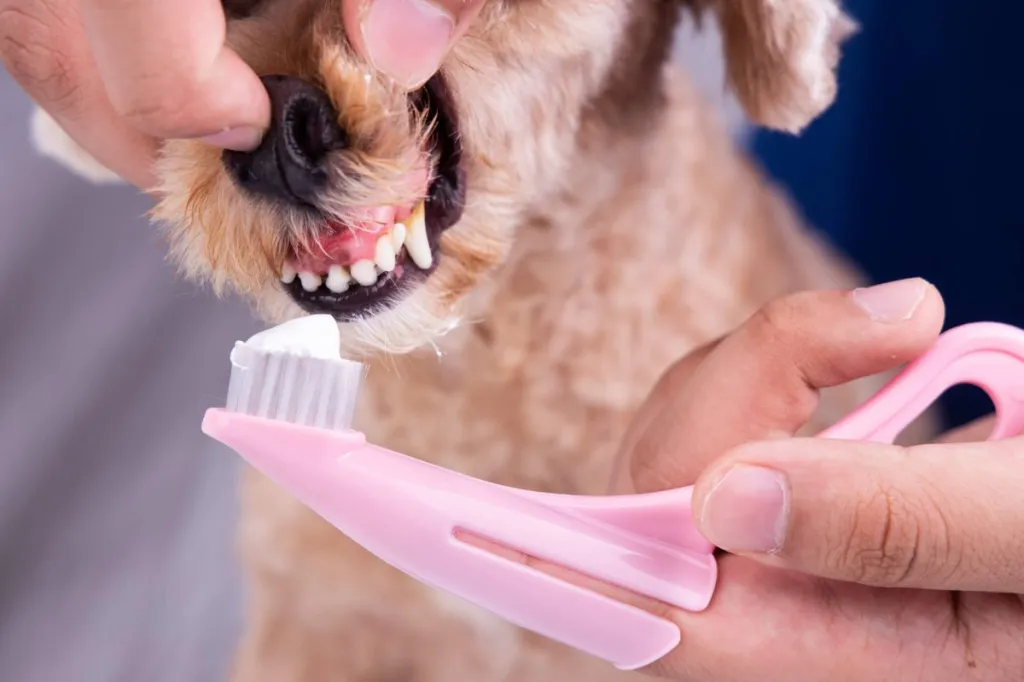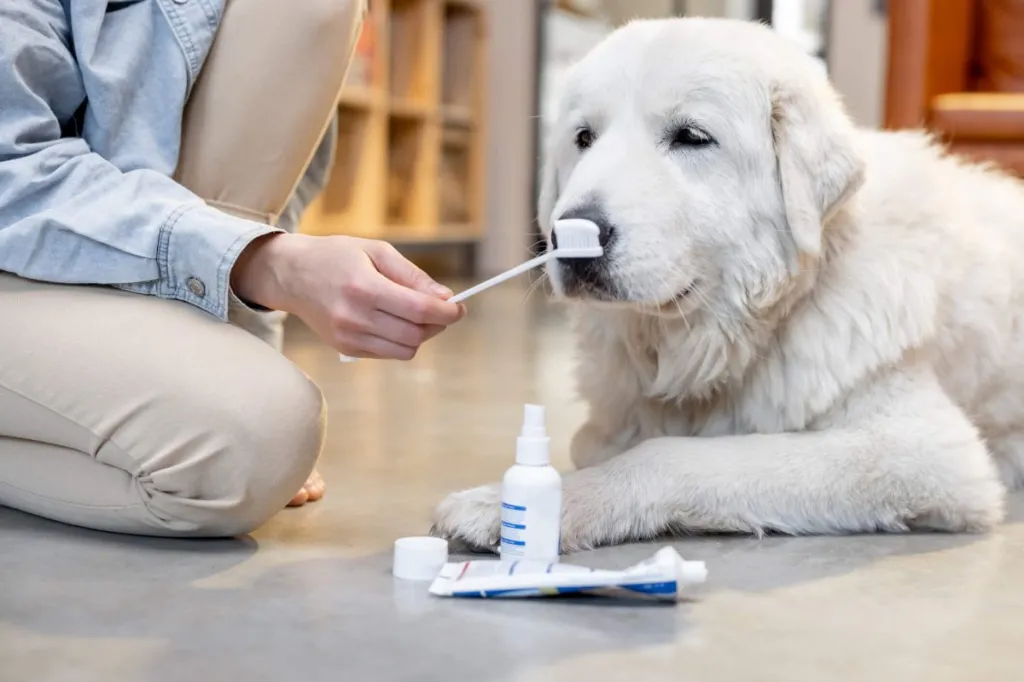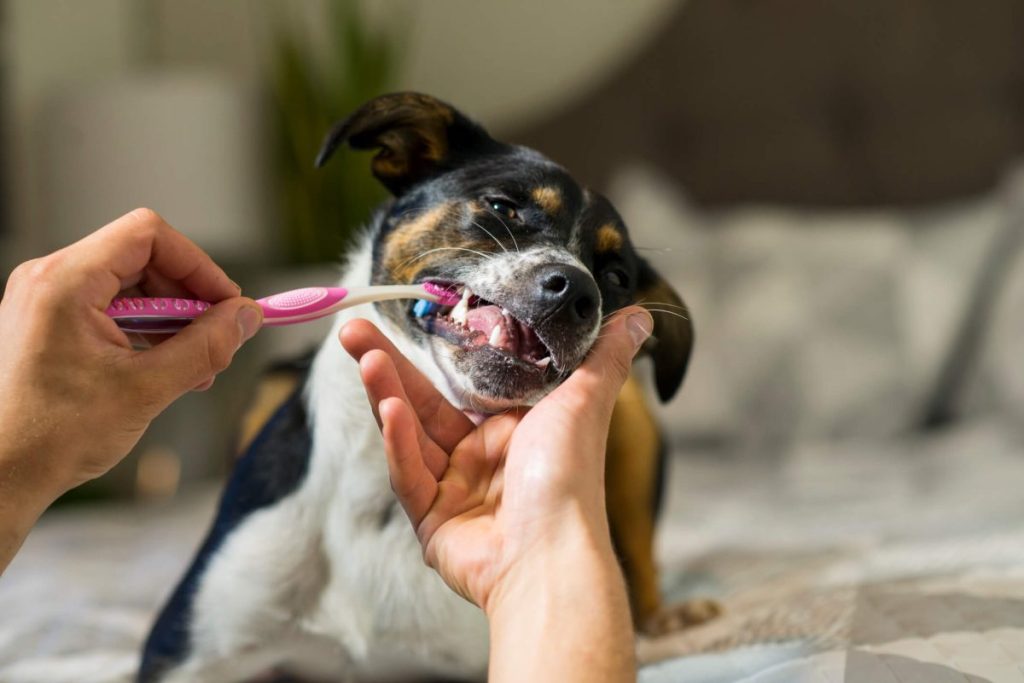As humans, we are diligent about our own brushing routines. However, our canine companions often get the short end of the stick when it comes to oral hygiene. If you’re a dog parent wondering whether your pet needs their own tube of toothpaste, you’re not alone. Dog toothpaste might sound like an extravagance, but it’s actually essential for keeping your pup’s pearly whites clean and their breath fresh. From picking the right formula to understanding why human toothpaste just won’t cut it, here’s everything you need to know about toothpaste for canines.
Why dental care matters for dogs
Firstly, let’s understand why dental hygiene is so important for dogs. Poor oral health can lead to a host of problems including tooth decay, gum disease — gingivitis — and infections. These issues don’t just affect your dog’s mouth; they can lead to more severe systemic health problems such as heart disease, liver issues, and kidney damage. By incorporating a regular dental hygiene routine, you’re not only preserving your dog’s teeth and gums but also contributing to their overall well-being.
Can dogs use human toothpaste?

The short answer is, no. While it may seem tempting to use the same toothpaste for you and your pet, it’s actually not safe for them. Human toothpaste often contains ingredients like fluoride and xylitol, which are harmful to dogs if ingested. Fluoride can cause serious digestive issues, while xylitol is highly toxic and can lead to dangerously low blood sugar levels or even liver failure. Since dogs can’t spit like we do, they end up swallowing the toothpaste. For your pet’s safety, it’s best to use a toothpaste specifically made for dogs.
What makes dog toothpaste different?
Dog toothpaste addresses the unique needs of canine dental care. Here are a few ways in which it differs from human toothpaste:
- Non-toxic ingredients: Unlike human toothpaste, dog toothpaste is made with non-toxic ingredients. It doesn’t contain fluoride or xylitol, making it harmless if ingested.
- Flavor profile: From beef to chicken to peanut butter, toothpaste for dogs comes in flavors that are far more appealing to your pooch than the minty freshness we prefer. The right flavor can turn toothbrushing from a dreaded chore into a tasty treat for your dog.
- Enzymatic formula: Many dog toothpastes contain enzymes that help break down plaque and tartar. These enzymes handle much of the work in keeping your pet’s teeth clean. In contrast, human toothpaste relies more on mechanical action — the brushing itself — and ingredients like fluoride to protect enamel. Therefore, dog toothpaste is formulated to be effective even if your brushing technique isn’t perfect.
- Texture and consistency: Dog toothpaste typically has a different texture and consistency compared to human toothpaste. It is often thicker and more gel-like, which allows it to adhere to the toothbrush longer and facilitates a more thorough cleaning process.
Types of toothpaste for dogs

Fortunately, there are a wide variety of dog-specific toothpaste options available on the market. Here are some of the different types you can choose from:
Enzymatic toothpaste
Enzymatic toothpaste is one of the most popular choice among dog parents and veterinarians. This type of toothpaste contains enzymes like glucose oxidase and lactoperoxidase, which help break down plaque and tartar. These enzymes create a chemical reaction that produces antibacterial properties, making it easier to maintain oral hygiene. Many enzymatic toothpastes also include mild abrasives that help remove plaque physically.
Natural or organic toothpaste
If you’re someone who prefers natural or organic products for yourself, you might consider the same for your pooch. These toothpastes typically contain ingredients like baking soda, coconut oil, aloe vera, and essential oils, without synthetic additives and preservatives. While they may not be as potent as their enzymatic counterparts, they still offer effective cleaning while being gentle on your dog’s gums and teeth. Additionally, they are a great choice for pets with allergies or sensitivities. However, always read the label to ensure that the natural ingredients used are safe and non-toxic for your dog.
Dental gel
Dental gels are a convenient alternative to traditional toothpastes. The gel formula is designed to adhere to the teeth and gums, allowing the active ingredients to work over a longer period. Unlike regular toothpaste, dental gels do not always require a toothbrush; you can simply apply the gel to your dog’s teeth and gums using your finger. This makes them an excellent option for dogs who are resistant to brushing or for quick clean-ups between more thorough brushings.
Vet-recommended toothpaste
Some toothpastes come with a seal of approval from veterinary professionals. These vet-recommended toothpastes are often backed by clinical studies and are developed to meet high standards of safety and efficacy. They may contain specialized ingredients such as chlorhexidine — which is known for its antibacterial properties — or additional supplements like Coenzyme Q10 to support gum health. Although they may be pricier, these toothpastes offer peace of mind if you’re looking for a clinically proven option.
Medicated toothpaste
Dogs with specific dental needs resulting from pre-existing conditions like periodontal disease, sensitive gums, or persistent bad breath can benefit from medicated toothpastes created to address these issues. For instance, toothpaste formulated for periodontal disease contains additional antibacterial agents that target severe infections and promote healing. Similarly, toothpaste for sensitive gums might include soothing ingredients like chamomile or aloe vera to reduce inflammation and discomfort.
How to make homemade dog toothpaste?

If you’re a DIY enthusiast, you can even create your own dog-friendly toothpaste at home. To start, you’ll need a few simple ingredients: baking soda, coconut oil, and an optional flavor enhancer like parsley or mint. Baking soda acts as a mild abrasive to help remove plaque, while coconut oil has antibacterial properties and provides a smooth consistency.
Begin by mixing two tablespoons of baking soda with two tablespoons of coconut oil until you achieve a smooth, paste-like consistency. For a bit of flavor and added benefits, you can add a pinch of finely chopped fresh parsley or mint. Some pet parents also add a drop of poultry or beef bouillon for taste — so long as the bouillon doesn’t contain any garlic, onions, or other seasonings which are not safe for your dog’s consumption. Store the mixture in a small, airtight container, and voilà! You’ve got a homemade dog toothpaste that’s ready for use.
It’s important to note that while homemade toothpaste gives you complete control over the ingredients, you must be cautious about the substances you use. Always consult your vet before using homemade toothpaste to ensure it meets your dog’s specific needs.
How often should you brush your dog’s teeth?
Ideally, you should brush your dog’s teeth every day with a dog-specific toothbrush. Most veterinarians recommend daily brushing to prevent the buildup of plaque and tartar. However, if that seems unmanageable, aim for at least three to four times a week. The more frequently you brush, the more effective you’ll be at maintaining your dog’s oral health. Remember, starting this habit early when your dog is a puppy can make the process smoother and more accepted as they grow older.
What are some alternatives to dog toothpaste?

If your pup simply won’t tolerate tooth brushing, don’t despair. There are other ways to keep their pearly whites in good shape. Keep in mind that these alternatives shouldn’t replace regular brushing entirely but can be helpful supplementary measures.
- Dental chews and toys: Dental chews and toys can be excellent stand-ins for dog toothpaste. They often have ridges and nubs that help to scrub away plaque and tartar. Some even come coated with enzymes or antimicrobial agents for added effectiveness. Look for products approved by the Veterinary Oral Health Council (VOHC) to ensure they meet quality standards.
- Water additives: These can be added to your dog’s water bowl to help reduce bacteria and freshen breath.
- Dental wipes: Dog dental wipes are pre-moistened and designed to wipe away plaque. They’re easy to use and less invasive than brushing, making them ideal for dogs who are a bit finicky about having their mouths touched.
- Raw bones: Offering your dog raw bones — never cooked, as they can splinter — can serve as a natural toothbrush. The mechanical action of chewing raw bones helps scrape away plaque and stimulate gums. Always supervise your dog when they’re chewing bones to avoid any choking hazards.
Choosing the right toothpaste for your dog
Finding the right toothpaste for your dog can be a bit of a challenge, given the wide variety of brands and formulations available. It might require some trial and error to discover a product that your dog not only likes but also tolerates well. To make the process easier, start by looking for a toothpaste with positive reviews and high ratings from other dog owners.
Remember, even with regular brushing, it’s important to have your dog’s teeth checked by a veterinarian at least once a year. Your vet can perform professional cleanings and identify any dental issues that may not be visible to you. They can also recommend the best toothpaste and dental care products based on your dog’s age, breed, and health condition.
Adblock test (Why?)
Powered by WPeMatico